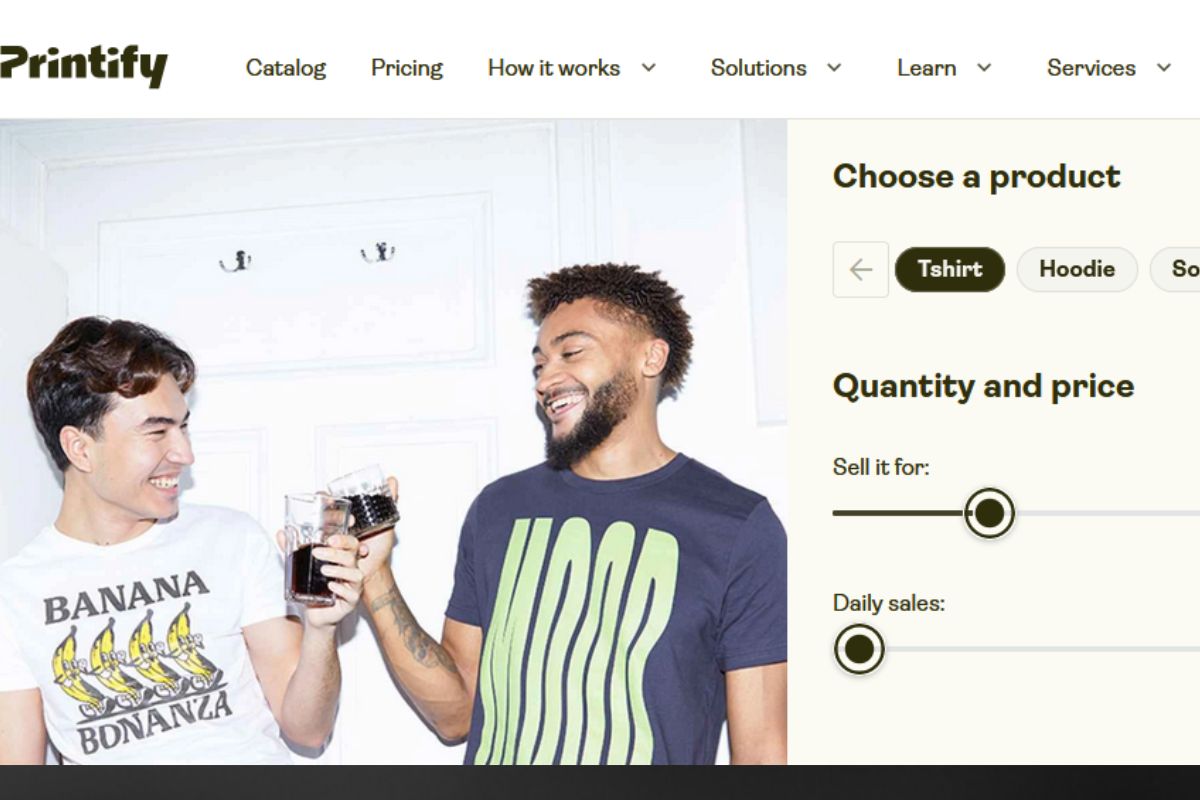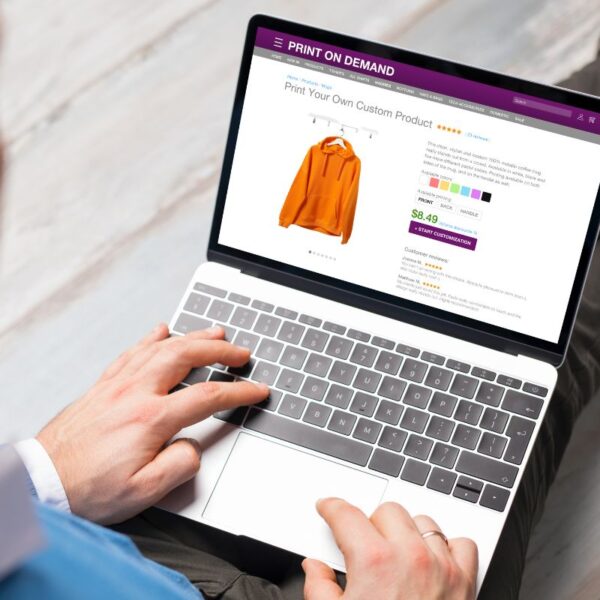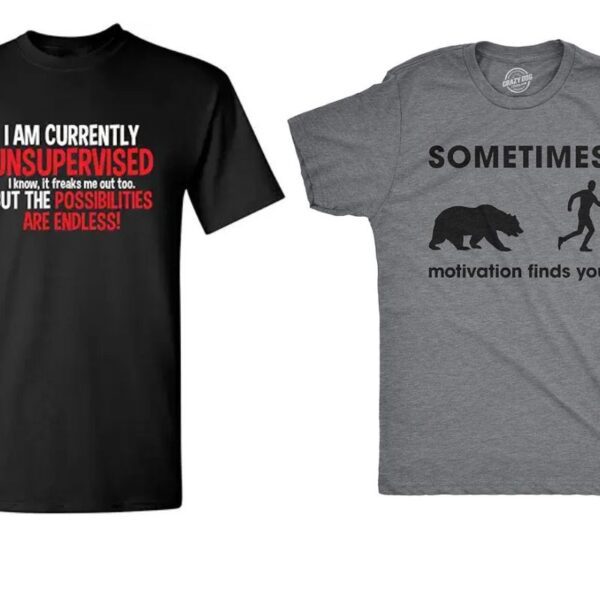When considering how much Printify charges per shirt, it’s essential to look at both production and shipping costs.
Typically, the cost of each shirt ranges from $10 to $15, depending on the quality and design choices you make. This cost will vary based on the materials and printing options you select.

Aside from the base cost of the shirt, your pricing strategy plays a crucial role in your overall profits. You may want to set a retail price that includes your desired profit margin, which is often recommended to be at least 40%.
This approach helps ensure that your business remains profitable while still appealing to customers.
Printify also offers different pricing plans that can affect your overall costs. For example, their premium plan provides discounts of up to 20% on products, which can significantly lower your expenses if you plan to sell a high volume of shirts.
Understanding these details can help you make informed decisions about your t-shirt business.
Understanding Printify’s Business Model

Printify uses a flexible model that helps merchants sell custom products without holding inventory. This allows you to focus on marketing and sales while Printify handles printing and shipping.
Print-on-Demand Services
Printify offers print-on-demand services, meaning products are created only after an order is placed. This reduces upfront costs and risks for you, the merchant.
You can list items on various platforms such as Shopify, Etsy, and eBay. When a customer orders a shirt, Printify takes care of the printing and shipping directly to them.
Their system lets you choose from a range of products, including custom t-shirts. Each product has its base cost, which varies based on factors like print location and garment type.
The Role of Print Providers
Print providers are crucial to Printify’s business model. They are the companies that actually print and ship your products.
You can select from a network of print providers based on your needs. Some may offer faster shipping, while others might have lower production costs.
Each provider has different pricing structures, which can affect your profit margin. This means you need to analyze your options carefully to maximize your earnings.
Choosing the right print provider can enhance your customer satisfaction and improve overall efficiency in your business operations.
Exploring Printify’s Pricing Structure

Printify’s pricing structure involves various factors, including production costs and membership plans. Understanding these elements can help you determine the overall costs of selling products like shirts.
Production Costs and Printify Fees
The production cost for each shirt varies based on the type of garment and the print provider you choose.
For example, one provider may charge $9.38 for a t-shirt plus $4.29 for shipping, totaling $13.67. Another option might have a t-shirt priced at $10.14 with $3.10 shipping, giving a total of $13.24.
It’s essential to factor in both the garment price and the shipping fees to calculate your total expenses. The total production cost will affect your profit margin, making it crucial to choose products wisely. Always check the specific costs for different print providers when selecting your items.
Printify’s Pricing Plans
Printify offers several pricing plans to accommodate different business needs. You can start with the free plan, ideal for beginners. This plan gives access to basic features but limits your store count.
For more serious sellers, the Printify Premium plan costs $24.99 per month if paid annually, or $29 per month if paid monthly. This plan allows up to 10 stores and provides discounts up to 20% on products.
For larger businesses, the Printify Enterprise plan is available with custom pricing. This plan accommodates unlimited stores and additional discounts, making it suitable for high-volume sellers. Choosing the right plan can lead to significant savings for your business.
Calculating the Cost per Shirt

Understanding how to calculate the cost per shirt is essential for pricing your products and managing profits. The total cost includes several components which you need to consider to determine the best price for your t-shirts.
Base Costs and Shipping Fees
Base costs usually include the production prices for each shirt. For instance, if the production cost is $7.68 per shirt, this is your starting point.
You also need to factor in shipping fees. These costs vary based on destination and shipping speed. If you offer free shipping to customers, you need to include these costs in your price calculations.
For example:
| Item | Cost |
|---|---|
| Production Cost | $7.68 |
| Average Shipping | $3.00 |
| Total Base Cost | $10.68 |
Thus, the base cost including shipping may reach about $10.68 before considering other expenses.
Additional Expenses to Consider
In addition to base costs, other expenses impact your total cost per shirt. Taxes on sales can vary depending on your location. You should include these when setting prices.
Payment processing fees also play a role. These can be around 2.9% + $0.30 per transaction, depending on the payment provider.
Don’t forget about fixed costs like monthly subscriptions for services such as Printify and variable costs that increase with production volume.
- Taxes: Check local regulations for sales tax rates.
- Processing Fees: Consider potential fees based on your payment method.
- Fixed Costs: Basic monthly fees for services you may use.
All these costs add up, so carefully assess each element to ensure you’re pricing your shirts effectively.
Determining Your Selling Price

Setting the right selling price for your shirts involves understanding several key factors. Your choices will affect your profit margin and how competitive your pricing is in the market.
Factors That Influence Retail Price
Several elements affect the retail price you set for your shirts. First, consider the base price charged by Printify, which varies by product and supplier. This base price includes the blank shirt, printing, and packaging.
Next, factor in marketing costs. These expenses play a role in your overall pricing. If you spend significantly on ads, for instance, you may need to increase your shirt price to cover these costs.
Competitive pricing is another important aspect. Look at what similar products are selling for to remain competitive. This can mean pricing your shirts slightly lower, the same, or even higher if you offer unique designs or higher quality.
Lastly, psychological pricing can be effective. Setting your price at $19.99 instead of $20 can make a difference in how customers perceive the value.
Profit Margin Strategies
Establishing a profit margin is crucial for your success. A common recommendation is to aim for a profit margin of at least 40%. To calculate this, use a basic formula:
Selling Price = Base Price + Desired Profit Margin.
For example, if your shirt costs $10 and you want a 40% margin, set your retail price at $17.
Utilize profit margin calculators available online to help determine appropriate selling prices based on your desired margin.
Another strategy is to adopt pricing strategies like tiered pricing, where you can offer discounts on bulk orders. This method can boost overall sales while maintaining your profit margin.
Leveraging Printify’s Features for Cost-Effectiveness

Printify offers several features to help you manage costs effectively while maximizing your profits. By using discounts and optimization tools, you can improve your pricing strategies and increase your sales potential.
Discounts and Special Offers
As a Printify merchant, you can take advantage of various discounts. The Printify Premium plan offers up to 20% off on products. This is a significant benefit when calculating your profit margins. If you also run several stores, the ability to manage up to 10 stores per account helps streamline your operations.
Special promotions can emerge periodically, providing additional savings. Keep an eye on the Printify catalog for seasonal offers or package deals. These discounts can help reduce your overall costs, making it easier to maintain a competitive retail price.
Tools for Design and Sale Optimization
Printify provides an array of tools to help you design and sell effectively. The mockup generator allows you to create appealing product images without extra costs. This visual appeal can lead to higher conversion rates.
You also benefit from unlimited product designs, letting you experiment with various styles without worrying about extra charges. For advanced needs, custom API integration provides flexibility in managing your store.
By utilizing these features, you can enhance your product offerings while keeping costs low. A dedicated account manager is also available for premium users, providing personalized assistance that can further optimize your sales strategy.
Maximizing Profits while Using Printify

To maximize your profits when using Printify, you need to manage your expenses effectively and adopt successful strategies for your eCommerce business. Understanding costs and pricing is key to increasing your earnings.
Efficiently Managing Expenses
You should first calculate your total costs when selling t-shirts. Consider all costs involved, including:
- Production Costs: The basic fee to create the shirt.
- Shipping Fees: Charges for shipping to customers.
- Transaction Fees: Applicable fees from your selling platform.
Use a pricing calculator to determine your product prices based on these costs. Aim for a profit margin of at least 40% to ensure growth. Keep track of marketing costs and consider how they impact your bottom line. Regularly review your expenses and look for areas to cut costs, such as bulk purchasing or using lower-cost materials that maintain quality.
Strategies for Ecommerce Success
To boost your earnings, consider conducting market research. Understand what similar t-shirts are priced at and how they are marketed. Adjust your pricing and marketing strategies accordingly.
- Set Competitive Prices: Use the pricing calculator effectively to find a balance between appealing to customers and ensuring profitability.
- Optimize Your Marketing: Invest in online advertising to reach your target audience efficiently. Consider social media campaigns and email marketing to improve visibility.
By focusing on both pricing and market strategies, you can better position yourself to attract customers and increase your profits.
Enhancing Customer Support and After-Sale Services

Providing excellent customer support and reliable after-sale services is essential for retaining customers. With the right processes, you can ensure that both merchants and their customers feel satisfied and supported throughout their shopping experience.
Handling Returns and Refunds
Managing returns and refunds effectively is crucial for maintaining trust with your customers. If a customer is unhappy with a product or receives the wrong item, having a clear return policy can help expedite the process.
Most print-on-demand services, like Printify, allow for returns on defective products. Customers should contact support within a specified timeframe, often within 30 days.
Steps for Handling Returns:
- Notify customers on your website about the return policy.
- Provide a simple return process; typically, this involves filling out a form.
- Issue refunds promptly once the returned item is received.
This transparency helps ensure a smoother transaction and promotes repeat purchases.
Support for Merchants and Customers
For merchants using Printify, having access to robust support options enhances your ability to serve customers effectively.
Printify offers various resources, including a help center and live chat, to assist with order management and troubleshooting.
Key Support Features:
- Live Chat Support: Available during business hours for instant assistance.
- Comprehensive FAQs: These address common questions merchants might have.
- Tutorials for the Product Creator: Easy-to-follow guides help you design and list products.
By utilizing these support features, you can resolve issues quickly, improving the overall shopping experience for your customers and increasing their loyalty.
Strategic Marketing and Target Audience Engagement

Effective marketing and connecting with your target audience are vital for selling custom t-shirts.
By focusing on specific markets and implementing smart marketing strategies, you can increase your sales and brand presence.
Developing Merchandise for Specific Markets
Understanding your target audience is key to successful merchandise development. Knowing their interests, preferences, and demographics can help you create custom t-shirts that resonate.
Start by conducting research to identify niches. For example:
- Age Groups: Design shirts for teens, young adults, or older audiences.
- Trends: Stay updated on popular themes, colors, and styles.
- Interests: Cater to hobbies, sports, and lifestyle choices.
Using these insights, tailor your product designs to meet specific needs. Align your merchandise with trends that appeal to your audience. This approach increases customer engagement and loyalty.
Implementing Effective Marketing Strategies
Marketing costs can vary, but strategic planning can optimize your budget.
Utilize both online and offline methods to reach your target audience.
Here are some effective strategies:
- Social Media Advertising: Run targeted ads on platforms like Facebook and Instagram to engage users directly.
- Content Marketing: Create blogs, videos, and graphics that showcase your custom t-shirts and connect with potential customers.
- Email Campaigns: Develop a mailing list and send newsletters featuring promotions and new designs.
By balancing marketing costs with returns, you can enhance your brand’s visibility. Analyzing performance metrics will guide you in refining future campaigns.
Frequently Asked Questions

Many users have questions about Printify’s fees, shipping costs, and how to calculate profits. Understanding these factors can help you make informed decisions when selling shirts through the platform.
What are Printify’s fees for shirt production?
Printify’s fees for shirt production vary based on the type of shirt and the printing provider you select.
For example, a Bella+Canvas short-sleeve tee may cost around $10 per shirt. Upgrading to a Premium plan can lower this cost by about 20%.
Does Printify charge a fee per sale, and how does it compare to per shirt production costs?
Printify does not charge a fee per sale. You only pay for the production cost of the shirt and shipping. This can help you keep your pricing straightforward and focus on your profit margin.
How do shipping costs factor into Printify’s pricing structure?
Shipping costs are separate from the production fees. When calculating total expenses, consider both the shirt price and the shipping fee.
Shipping costs can vary based on the provider and destination, impacting your overall expenses.
How can I calculate potential profits when selling shirts through Printify?
To calculate potential profits, use the formula: Profit = Selling Price – (Shirt Cost + Shipping Cost).
This helps you understand how much you can earn based on your pricing strategy.
What percentage of a sale does Printify take as a commission?
Printify does not take a commission from your sales. Instead, you pay for the production and shipping costs only. This allows you to set your own retail prices without worrying about additional commission fees.
What pricing should be set to achieve a profitable retail margin with Printify?
To achieve a profitable margin, set your retail price by considering production costs and your desired profit margin. A common recommendation is to aim for a minimum profit margin of 40% on your products.



